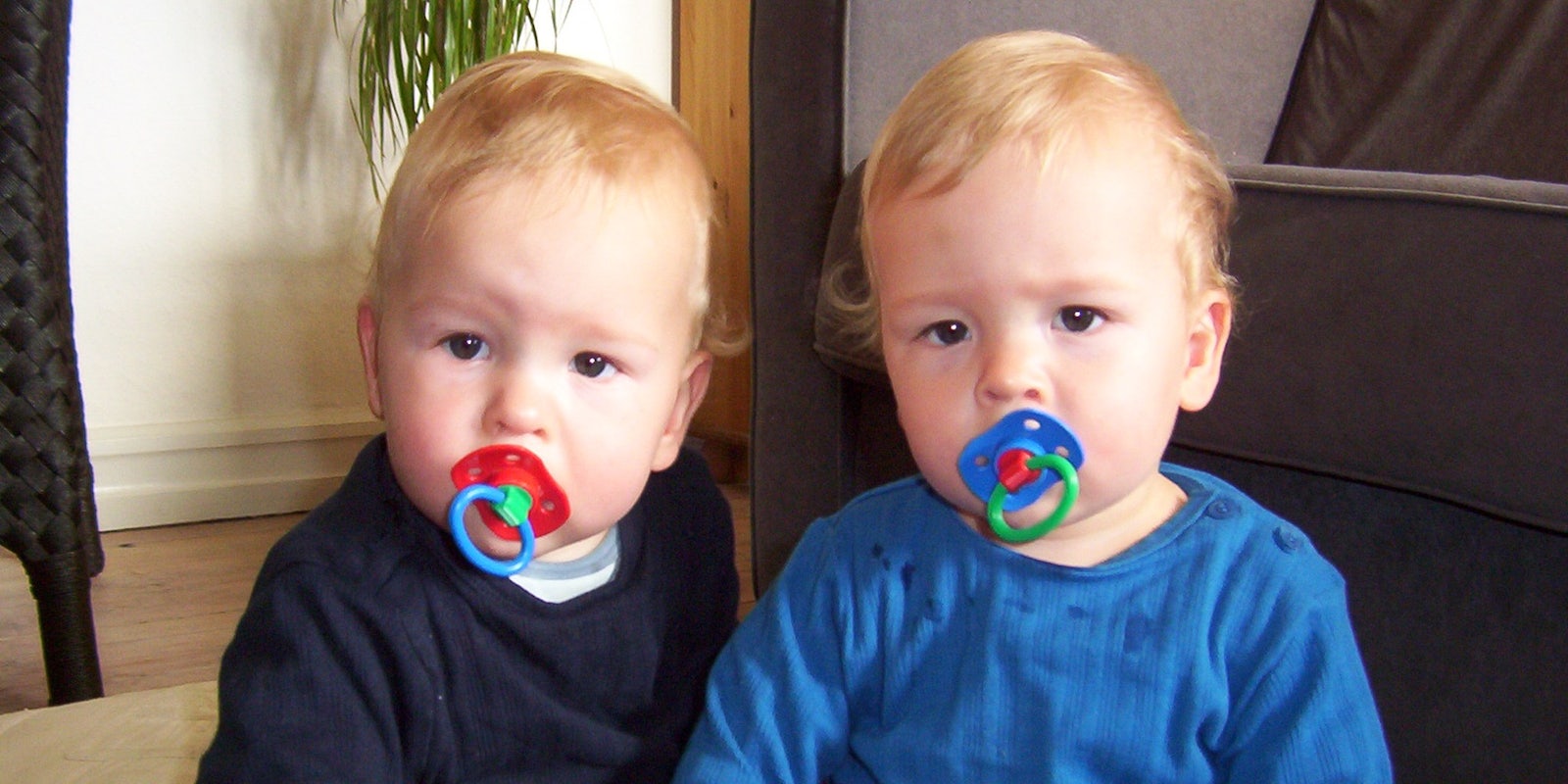Is who we are, what we look like, and why we get sick largely due to our DNA (nature) or our environment (nurture)? It’s an age-old question that finally has something approaching a definitive answer.
Researchers published a study in Nature Genetics this week that aggregated more than 2,000 different studies across 50 years that examined how much variation in traits were determined by genetics or environmental factors. They found that for the majority of traits studied (69 percent), the amount of variation of those traits in the population was about half determined by DNA and half by environment.
The researchers were looking at a measure called “heritability,” which tells you how much variation in the expression of a trait in a given group of people (the phenotype) is mediated by variation in that group’s genetics (the genotype).
Here’s an example. Let’s say that the heritability factor for major depression is 60 percent. That means that 60 percent of the amount of variation of who has major depression and who doesn’t can be explained by differences in genetic factors. If everyone in that group we observed had the same exact genetic traits related to depression, the variation in how many people actually have major depression would drop by 60 percent—the remaining 40 showing that environmental factors like a traumatic event can be the trigger for depression.
Here’s another simpler, if grislier, way to think about it: What would you want the heritability rate to be for the trait of having four limbs? If you said 100 percent, you’d be wrong. We may see a lot of variation in the number of limbs in the population, but you’d sure as hell not want all of that to be related to differences in the DNA—that’s a lot of mutation going on. Instead, you’d want the heritability rate to be closer to zero, so most of the variation in the number of limbs could be explained by environmental factors (such as losing a limb in a car accident.)
So then when you get a heritability rate of close to 50 percent, that should tell you that there is a complex interplay between genetic and non-genetic factors that determine the variation in a particular trait. Knowing this will help researchers better understand why some people develop a particular disease while others are unaffected.
Let’s also look at how the researchers came to that conclusion. They performed a meta-analysis, a type of study wherein you aggregate a bunch of data taken from many similar studies and crunch the numbers to get one super-study with a lot of data. They’re seen as a way to make sense of many disparate studies but they also have a couple of pitfalls. The first is that normalizing the data can be difficult if the data from all the source studies was not gathered in the same way. Another problem is controlling for “publication bias,” or how studies that tend to show positive or dramatic results are more likely to be published than ones that show more mixed, less black-and-white data. (The researchers did control for publication bias, by the way, and found that there wasn’t a significant level of bias in this group of studies.)
The type of study that the researchers looked at may sound familiar if you ever took a psychology course: the classical twin study. Classical twin studies compare traits in identical and fraternal twins. Identical twins form when one sperm fertilizes an egg and then the egg splits into two embryos. Fraternal twins form when two sperm fertilize two separate eggs, creating two siblings that happen to share a womb. Researchers compare these types of twins to see if the identical twins are more likely to show a particular trait than the fraternal twins, suggesting that trait has a high genetic component.
The researchers found that heritability varied between different kinds of traits and across age groups (where environmental factors generally became more and more important as the twins got older.) Heritability was highest in factors relating to ophthalmology, ear, nose, and throat, skin, and skeletal factors. It was lowest in traits like social values and reproduction.
But the studies aggregated also tended to skew toward looking for heritability in certain traits and not others. In particular, most of the studies were focused on psychiatric, metabolic, and cognitive factors—whether or not things like depression, weight gain, and ADHD are likely to be rooted in genetics. The traits with the highest levels of heritability tended to be the least studied. And that shouldn’t be surprising because generally the more a particular phenomenon is studied, the more varied the data gets over time.
And while this study is not the end-all-be-all meta-analysis that the news would have you believe, it should tell you that “the conversation should move away from nature versus nature, instead looking at how the two work together,” as the Guardian reported.
It’s also not exactly surprising. If you know any identical twins, particularly adult identical twins, you know that they’re not exactly the same. One may be a little taller or have slightly different bone structure. And identical twins most certainly don’t have identical personalities—so obviously their environmental experiences have to play a role in those differences.
Factors like the composition of your gut bacteria and changes to the expression of DNA (epigenetics) are demonstrating a helping hand in diseases from autism to multiple sclerosis. And those factors are readily affected by one’s environment—such as diet or whether or not a person smokes tobacco. Some researchers are even looking into how to target environmental factors to prevent or treat diseases.
And for the average person, it may tell you that you shouldn’t blame all of your problems on the poor genetic hand your parents dealt you. And maybe that you should stop smoking.
Screengrab via Glow/Wikimedia (CC BY 3.0)


